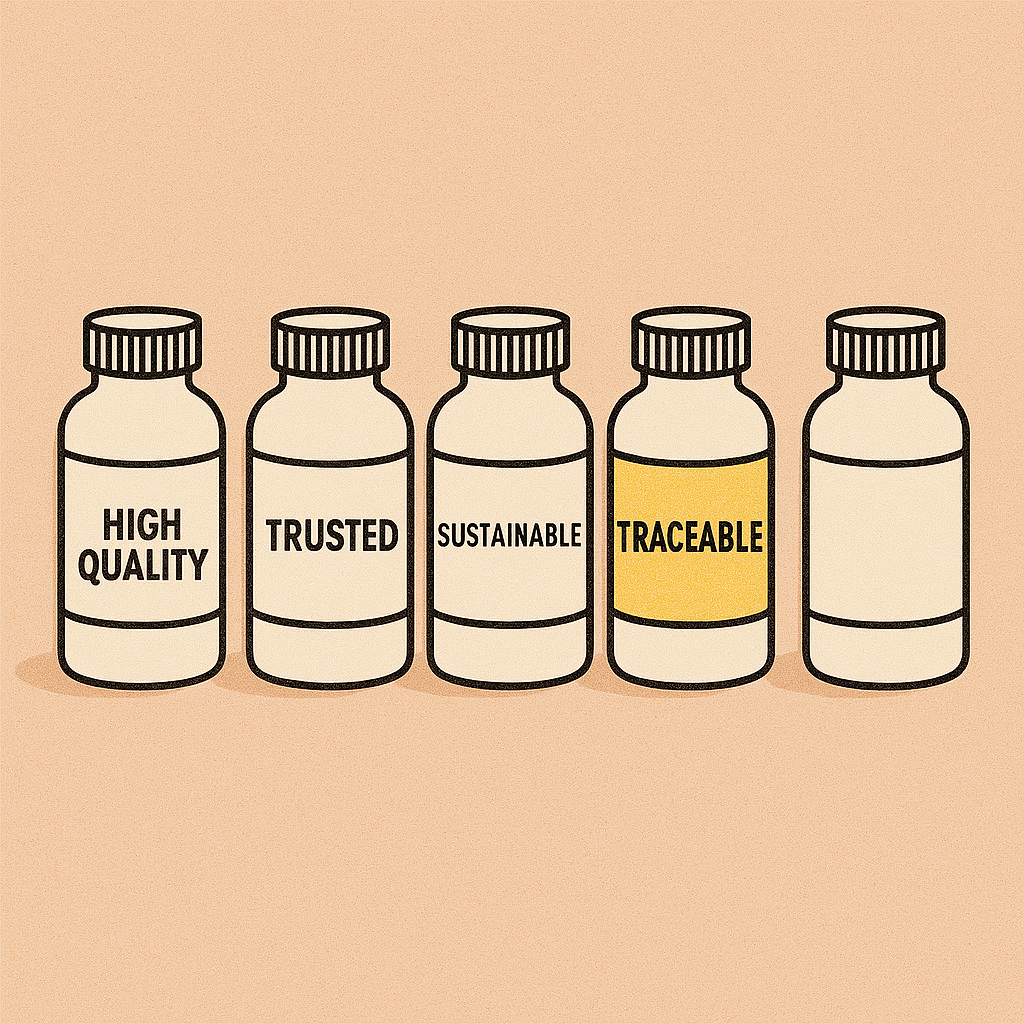You’re not on the label, but that doesn’t mean you don’t need a brand.
If you’re an ingredient supplier, chances are your name isn’t on the final product. You’re behind the scenes — collaborating with formulators, manufacturers, and brand teams — while someone else secures the shelf space and consumer spotlight.
And yet, you’re the one doing the hard work: sourcing, developing, testing, and delivering.
So how do you build a brand when your name never appears on the label?
Start with What Makes You Different (Beyond the Tech Specs)
Your product might be backed by solid data and brilliant science. But if your marketing stops at TDSs and specifications, you risk blending in with everyone else.
Words like “quality,” “trusted,” or “sustainable” are ubiquitous. These aren’t differentiators — they are the bare minimum.
What sets you apart? Is it your sourcing process? Your traceability? Your technical support? Your story? That’s where true branding begins — with a specific, ownable point of difference that makes someone remember you.

Speak to More Than Just the Buyer
You’re not merely selling to procurement. Ingredient decisions often involve formulators, R&D teams, product developers, and brand managers — each with differing priorities.
If your marketing only addresses one of those groups, you’re missing opportunities.
Technical buyers want data and compliance. Marketing teams seek a narrative they can engage with. Product developers need to understand what your ingredient enables — not just what’s in it.
Strong ingredient branding speaks to the entire chain of decision-makers, not just the one placing the order.
Don’t Let the Spec Sheet Do All the Work

Many ingredient companies depend on technical data sheets to do the heavy lifting. And yes, the data is important. But if you’re leaving the storytelling to a PDF table, you’re losing control of the conversation.
Your website, brochures, trade show stand, and email copy — all of it should help people understand why your ingredient matters.
This doesn’t mean overselling. It means communicating clearly with materials that support both technical and commercial conversations.
You Can Be Behind the Scenes and Still Be Memorable
Just because your customers are the ones with the consumer-facing brand doesn’t mean you should be invisible.
Having a strong identity — in how you articulate and present yourselves — builds trust, recognition, and long-term relationships.
Because at the end of the day, people still buy from people. Even in a world of spec sheets and supply chains, brand matters.
The Bottom Line
You might not be on the label, but you’re still part of the product. If you want to stand out in a crowded supplier market, it begins with clear, confident marketing that reflects your value.
Need assistance in building a brand that operates behind the scenes?
Let’s talk.
